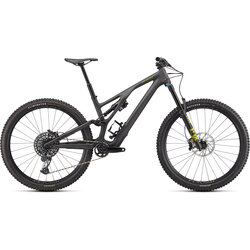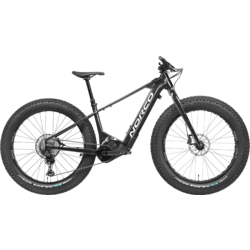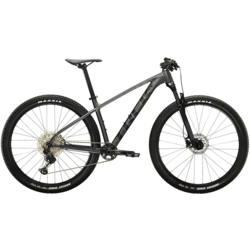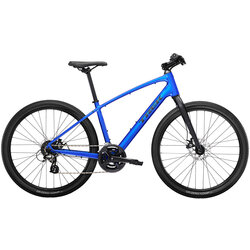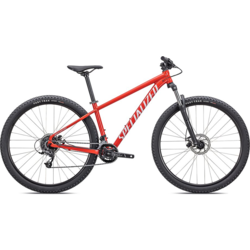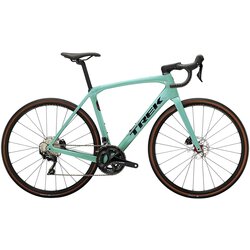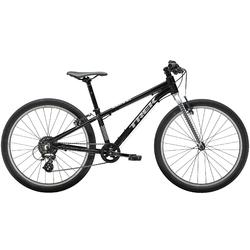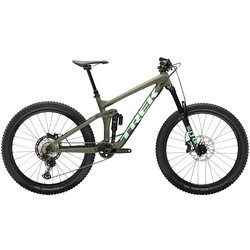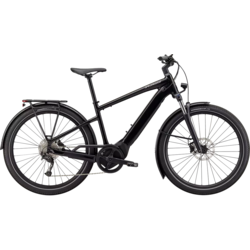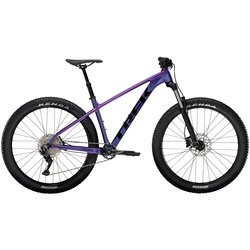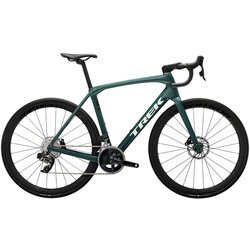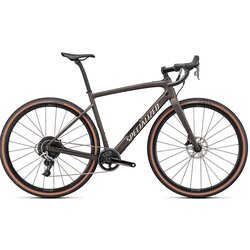Top 10 Bike Tips
Top 10 Bike Tips
These tips made the top ten because they apply to all riders and bikes whether you are experienced or not, or whether your bike is a heap or cost 10 grand. There are a few exceptions which will be obvious to those they apply to, like the tips about shifting for singlespeeds, standing on the pedals for recumbents and the like.
1) Gear shifting should only be attempted while pedaling smoothly with light pressure on the pedals. There are two main reasons. 1st when there is a lot of tension on the chain (caused by pedaling hard) the front Derrraileur by its nature has a hard time pulling the chain off of one chainring and onto another, and so often it can’t complete the shift. Also gear shifts both front and rear happen much quicker when the crank is spinning lightly, but not slowly. The 2nd reason is that this added tension while shifting stresses the whole drivetrain causing premature wear to the parts. What this means practically is that riders have to plan ahead and shift to a lower gear before they are halfway up the hill and aren’t able to let off pedal pressure to make a smooth shift.
2) Chain lube is not always your friend. The chain is the only friction surface on a bicycle that needs frequent attention but there are good and bad ways to maintain it. For a chain that is dry the proper technique is to drip lube onto the chain and then follow up by rubbing the excess off with a rag. This part is key because any lube that is on the chain will cause dirt to stick to it, which acts as an abrasive and wears it quicker, not to mention making it all gunky. So the idea is to have just enough lube on the chain to keep it quiet and smooth, adding more oil is not a good way to improve shifting and is in fact worse for the chain. As for what lube to use, thinner is better (any of the bike specific models work well), again to attract less grime. The dry wax lubes are fine but getting rid of the excess is key because the wax itself can build up on the chain.
3) Bikes are not weatherproofed. It sounds obvious but we see it all the time, bikes that are effectively totaled just because they were left outside for an extended time. So many metal parts are exposed and even stainless steel cables can get corroded and cause shifting problems. Riding in the rain or even snow is not damaging by itself, but the bike needs to come inside to dry. Bikes do not need a heated environment in the winter, just a dry one. It is possible to keep a bike running through winter on the salty roads around here but it takes more maintenance.
4) All bike tubes lose air pressure at a steady rate. This is primarily due to the light weight of the tubes and tires. Road tires should be kept up to at least 100psi, and they need to be checked before every ride as they may lose up to 5psi a day. Hybrid type bikes vary but should be pumped up at least into the middle of the recommended range on the sidewall of the tire and should be checked every week. Mountain bikes lose pressure more slowly due to the lower pressures but they should still be checked every week. Most people should use at least 35psi for trail use and 50-60psi for road use. The most important reason to keep tire pressure up is to dramatically reduce your chance of getting flat tires. The second is to get the right balance between rolling friction, ride comfort, and traction for the given discipline.
5) Some ideas for making your cycling more comfortable. Although cycling is a low impact activity, humans were not designed to ride bicycles. Backs, necks, butts and hands all get sore from lots of saddle time. Changing parts to get a more upright position, gloves, ergonomic grips, and saddles can all help but there are some other things you can do. First, cyclists should stretch out before, during and after a ride, as the back and neck muscles get tight from holding a riding position and need to be relaxed. Strengthening abdominal muscles is good for taking stress off the back. Even on a good fitting bike people sometimes get hand numbness on longer rides, so change hand positions frequently and periodically take a hand off the bar (if you are comfortable with that) to get better circulation. Also having a level seat will take weight off your hands. As for saddles, there are some bad ones out there but a wider, softer model is not a good option if you want to put a bunch of miles in. There are now available a good number of saddles available with a cutout design to relieve pressure and improve blood flow. Basically if the seat fits you well, most butt soreness goes away as you put the miles on, but standing up on the pedals now and again is good to give it a break.
6) Beware of the bent Derailleur Hanger (and loose sticks). When new, your derailleur hangs down straight from the frame. It (or the hanger it is attached to) can become bent in by the bike getting knocked over, getting a stick caught in it, or some other collision. This event will affect shifting performance, but the real damage will occur when you attempt to get into the largest cog. Now that the derailleur is bent it may get caught in the spokes when you choose that gear. The wheel will grab the derailleur and twist it backwards until it is forced to skid to a stop. Meanwhile the chain has jumped over the cog and has started gnawing on the spokes. At this point you will be very fortunate to be able to twist things back enough to ride home. Usually you have about a 1 second warning to prevent this scenario. When you hear the sound of the derailleur cage hitting the spokes, hit the brakes and stop pedaling instantly, you may prevent major damage and can usually get home by not using that gear. A stick can get caught in the wheel and catch the derailleur and rip it around as well. Again, you usually have enough time to stop the wheels from moving to prevent a walk home if you are paying attention.
7) A list of standard wear items:
- Chain; Many people try to save drivetrain wear by replacing the chain often (at less than 1/16 inch of stretch per foot) and it sometimes works but frequently one or two cogs will be more worn than the others and cause the chain to skip. Bikes ridden often may need a new chain every year, or even a few for people riding more than a few thousand miles a year.
- Cassette; the cassette wears at about the same rate as the chain and so they often need to be replaced at the same time as the chain. As above though, sometimes the replacement rate can be slowed.
- Chainrings; because of the greater surface area of the chainrings, they need to be replaced less often. Mountain bikes ridden in the mud need new ones more often than average. On nicer bike they can be replaced individually as needed.
- Brake pads; Mountain bikes with rim brakes ridden on long muddy descents can go through a set of pads in a few rides. In dryer conditions they can easily last a season. Road brake pads are more likely to get metal bits embedded in them before they actually get used up. All rim brake pads have wear marks to tell you when they should be replaced and should be checked often. The consequences of not replacing pads in time are ruined rims and possible accidents caused by loss of braking power or exploded rims. Disc brake pads can often last 1 to 2 seasons around here. They should be checked to see that there is over 1 mm of pad material left on the whole surface.
- Rims; this applies to rim brake equipped bikes. The friction of the brakes combined with the dirt we often encounter wears away at the rim over time, gradually making the braking surface concave. There is not an absolute measure of when the rim should be replaced, but if it is at all questionable we recommend replacing it, as the consequences of a rim breaking mid ride can be very bad.
- Cables and Housing; Cables and their housing gradually get gunked up or corroded even with good care. This causes the controls to move stiffly and shifting quality to suffer. Replace as needed to restore that like new feeling.
All other moving parts will eventually have to be replaced as well, but at less frequent intervals.
8) Pay attention to the warning markers. All seatposts and some types of stems have a mark that clearly states the maximum height that the part can safely be used at. Raising the part above the maximum level is not likely to result in death but it can ruin the frame and it can cause an accident. Almost always, if the bike is at least mostly the right size we can get you a seatpost or stem that will fit the way you like and still be safe.
9) A minimalist list of useful accessories: Number 1 is a helmet. If you are planning on riding frequently or for any real distance we recommend bike shorts at a minimum for clothing purchases, gloves, glasses, non cotton shirts and socks will all make your journey more comfortable. If you want to be able to fix your own flats on a ride you need a pump (or CO2 inflator) that fits on your bike or bag, a spare tube, a tire lever, and some sort of carrying device. The other important item to carry with is water. Whether by bottles or hydration pack is up to you. If you are going out for say a couple hours or more, some type of energy food will make you much happier. A floor pump is something that all cyclists should have access to at home due to #4.
10) How to get along with Traffic. First advice: obey all traffic laws, of course because it’s the law, but it also keeps you more out of the path of cars. The second is to not assume other drivers see you. Drivers have large blind spots that can easily hide cyclists, and you can get into places another car couldn’t so a driver may not be looking there, which segues into the third point. The third is to ride were you will be visible, that is, where drivers would be looking. Do not ride all the way to the right of the road with the broken pavement and glass (or opening car doors). Not only are you risking flats and crashes, drivers go by as though their mirror had a tremendous attraction to your elbow. Moving in to the left a little bit gives you a better chance that drivers will give you proper space. You have a legal right to the road as well that they do.
Get the Gear You Need
Shop for the perfect bike before your next ride. We’re here to answer all of your cycling related questions.

